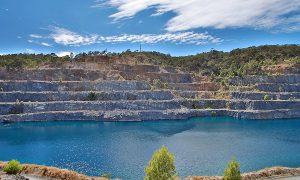As renewables are replacing coal, carbon emissions associated with the generation of electricity are falling in the UK and in most countries. That’s the good news. The bad news is that progress in the transport sector, in the UK and globally, has been woefully slow. Transport is now the UK’s biggest source of carbon emissions. It is also the source of most of our nitrogen oxides and particulate matter pollution, both known carcinogens, causing much ill health and death. Over the next few weeks I’ll explore what could be done to lower carbon emissions, pollution, prevent accidents and to generally improve things.
Many cities around the world are acting to limit the use of cars, investing in walking, cycling and better public transport. Barcelona, Copenhagen and Freiburg are all making excellent progress. Sadly many other cities are still building roads in the mistaken belief that they are the future of transport. Hereford, where I live is one such place. The new link road has recently opened allowing better car access to the northern part of the city centre, but at an unnecessary financial and environmental cost. The Tory cabinet are determined to build a by-pass. Some of us have been active in our opposition to this for decades. We managed to stop the Eastern route on environmental grounds back in about 1991. Now the council have seven alternative routes for a Western by-pass and are running a consultation process. Please fill-in a form, available from Hereford Library or from the council website (and do so before the consultation closes on 20th March). Also do please sign the 38 degrees petition against the by-pass.
On Wednesday 28th February, as part of the Left Bank’s weekly politics, ethics and environment sessions the Green Party are hosting a public debate on the by-pass. If you live in Herefordshire, please come and join-in: 7.30pm, this Wednesday, all welcome and free admittance.
Here are a few recommendations I’d like to explore.
How can we improve access and permeability for pedestrians, cyclists and public transport users, while decreasing it for cars?
How to make safer routes so children can walk and cycle to school?
Which roads would we like to see pedestrianized?
Lowering urban speed limits would help: by how much and where?
Could we introduce a congestion charge or toxin tax as has been done in London?
Could the council impose a parking charge on people using supermarket car parks?
When might we see battery electric and hydrogen fuel cell buses, trams and cars replacing fossil fuelled ones in Hereford? (This is beginning to happen in some places, and will be the subject of another blog in a few days time).


